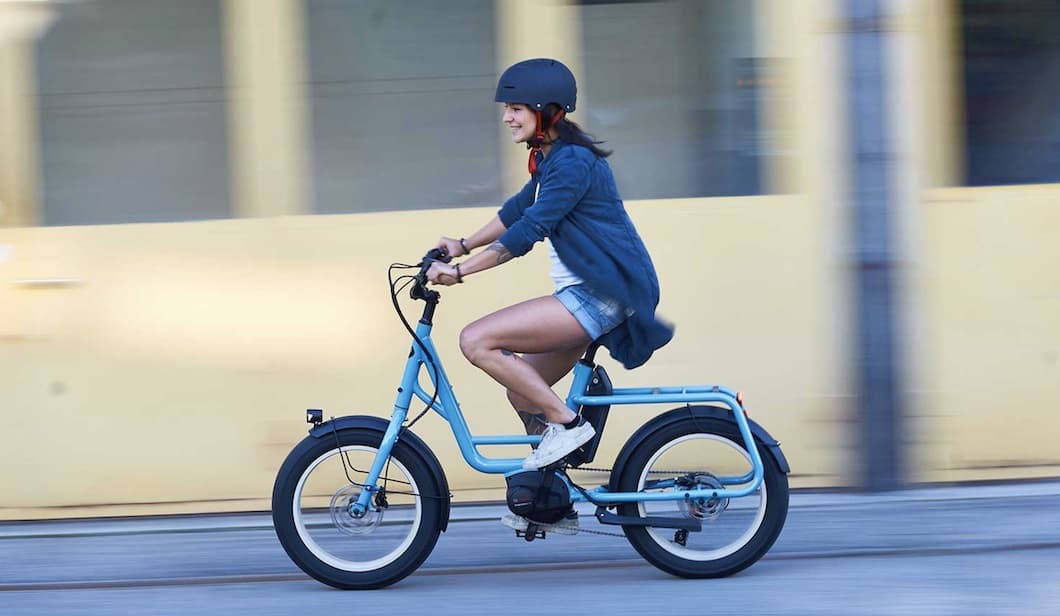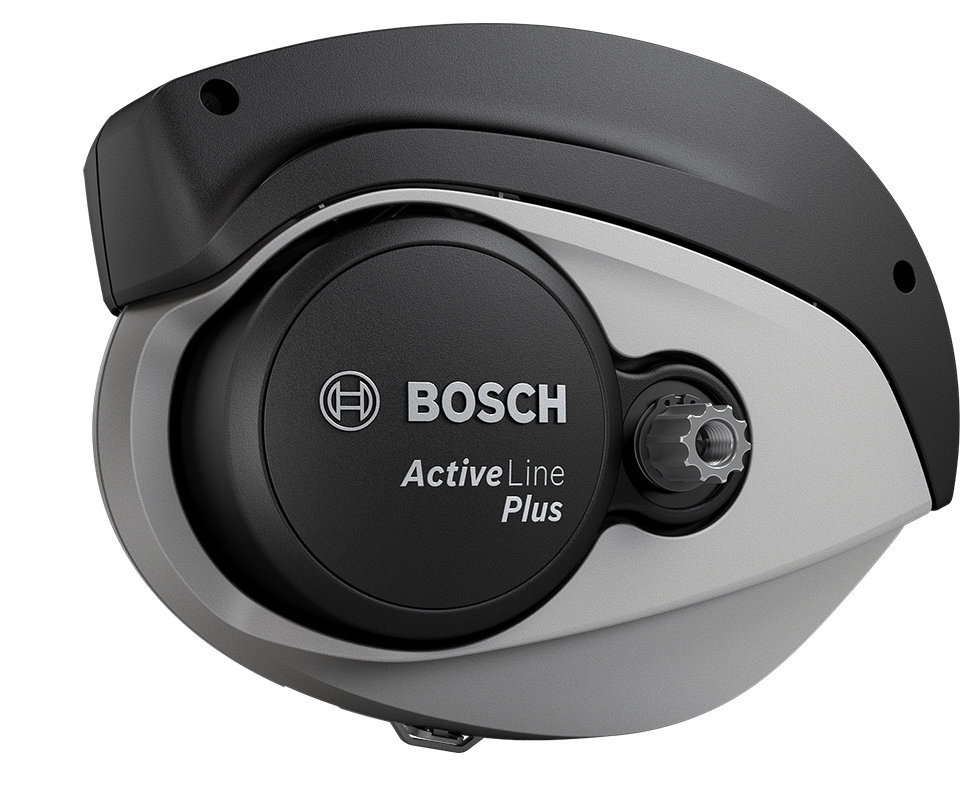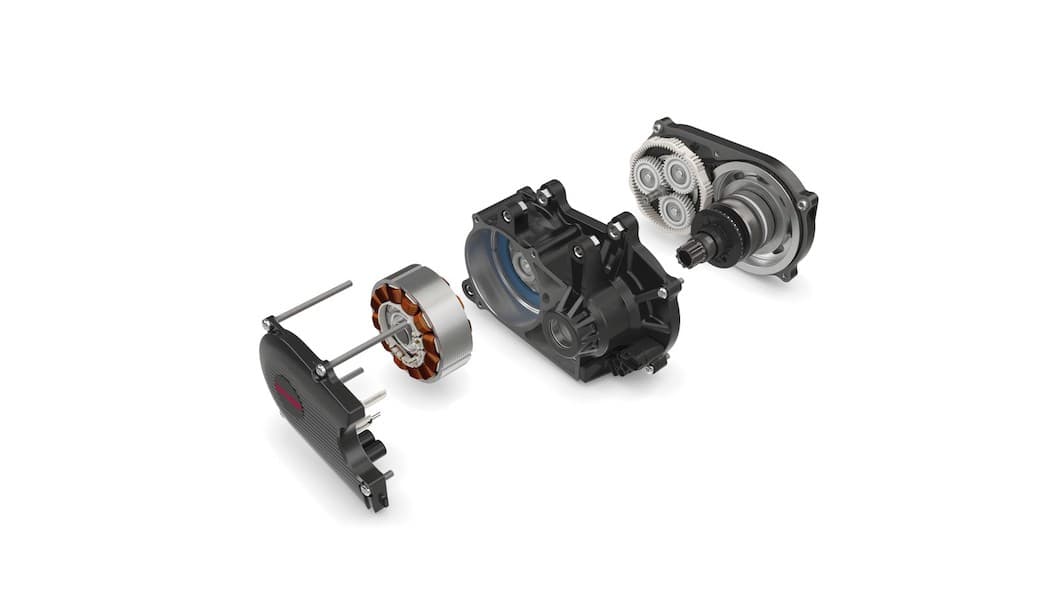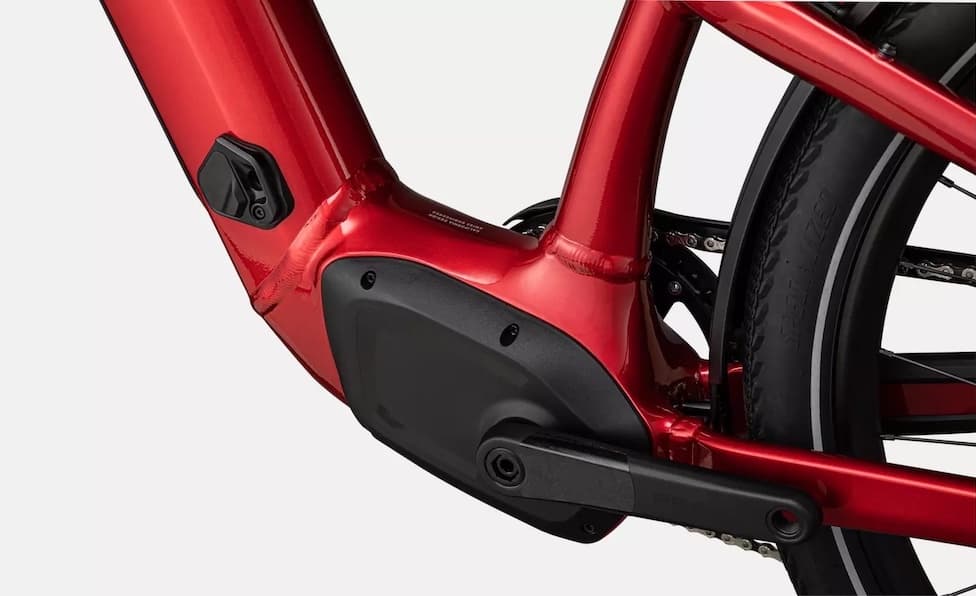
There are two ways to power an e-bike. One is by adding power at the wheels—usually, but not always the rear wheel. The other is to add power at the pedals, or more specifically, at the crank. Mid-drive motors confer a number of advantages to an e-bike, including improving the bike’s handling by helping to keep the bike’s center of gravity low and balanced between the wheels, as well as giving a manufacturer an opportunity to include security features.
The biggest advantage an e-bike presents is efficiency; it can do more with less power and it draws less electricity because it needs less power.
What you should know about e-bike mid-drive motors
Arguably, the first thing an e-bike shopper needs to know about mid-drive motors is that they drive up a bike’s cost. They do this for a couple of reasons. First is the fact that mid-drive motors require a special motor mount that the frame must be built around. A bike company can buy a standard bike frame from an Asian factory at a very affordable price; all of that tooling was paid for years ago. The tooling to build frames with the motor mounts required for Bosch, Brose and other motors is still very new and as a result, those frames are more expensive. That alone drive up the cost.
Next, mid-drive motors are more sophisticated than the ones in hub motors. They use a much more responsive torque sensor, which is why when someone gets on an e-bike with a mid-drive motor, the power begins the moment pedaling begins, not a half pedal stroke later.

Why aren’t the motors more powerful?
While some of the mid-drive motor manufacturers can be rather cagey about just how much wattage their motors produce (we’re looking at you, Bosch), it makes sense to add power at the front end of the drivetrain, so to speak. To explain this, we need to back up just a touch.
Gears on a bike allow a rider to increase the mechanical advantage they enjoy over the bike. A gear with a 1:1 ratio is a very low gear, the sort of gear that would be great for climbing a steep hill. A gear with a 2:1 ratio—that is for every one revolution of the pedals, the rear wheels makes two revolutions—makes for a terrific gear to ride around on flat ground at a gentle pace. One with a 3:1 ratio is terrific for spirited riding—it’s quick.
By inserting the motor at the point in the drivetrain where the pedals begin turning the crank (and thus, turning the chain), the motor is able to take advantage of that multiplication of effort, and in that, do more with less.

Why does torque matter?
Torque is a measure of force, in this instance, twisting. Lots of torque in a motor means it has a terrific mechanical advantage to an axle or other shaft. A low gear on a bike increases the amount of torque at the rear wheel, which is why they are helpful to getting up a hill.
An e-bike motor that produces lots of torque will help a rider get up a hill, even if they don’t downshift to an easier gear. So how much torque is lots? What we see with e-bikes is that motors that produce less than 60Nm of torque will struggle on longer or steeper hills. Motors that produce north of 70Nm of torque tend to perform well on hills, and more torque means better hill performance, simple, if not pure.
How does a smaller motor affect battery usage?
Motor size and battery usage can be equated to a great degree with car engine size and gas mileage. A compact car in good working order (we’re going to leave out anything ancient that belches black exhaust) will get terrific gas mileage. The engine is small and efficient. On the other hand anything with a V8 has tossed aside efficiency in favor of holy-cow-that-was-fast performance. It will also consume gas like a tribe of goats eating a field of tall grass.
The upshot here is that a 500Wh battery will offer an e-bike with a 250W mid-drive motor much more range than it will an e-bike with 750W hub motor. Practically it won’t mean anything appreciable in terms of cost to charge the battery, but it is likely to result in a quicker charging battery.

And it weighs less, too
It’s hard to say that mid-drive motors are small. Physically, they are large enough to be quite noticeable, but the components within them aren’t especially heavy when compared to what’s inside a 750W hub motor. And just as a AAA battery weighs less than a D cell, a 500Wh battery will weigh less than a 700Wh battery.
That translates to a bike that is easier to manage at low speeds and off the bike, like when parking it. Also, moving a mass requires energy. The greater the mass, i.e., the heavier something is, the more energy required to move the thing. A 180-lb. rider on a 50-lb. e-bike won’t use as much of the battery’s energy as a 180-lb. rider on a 75-lb. e-bike.
Bottom Line
It’s easy to look at the spec sheet for an e-bike with a mid-drive motor and think that e-bike won’t be as powerful as many e-bikes with hub motors. That’s the mistake. Mid-drive motors do more with less, but they drive up the price of the bike. And it’s okay if that seems a little counterintuitive; it is. Who would spend more money to buy an e-bike with a less powerful motor? Anyone who wants to wring every bit of work from each watt that e-bike motor produces.
Images courtesy Benno Bikes, Bosch and Brose


Leave a Reply